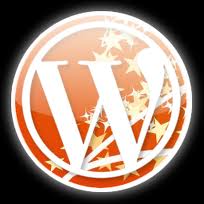WordPress plugins tutorials can be helpful if you are looking for a WordPress plugins tutorial that will help you learn how to install and modify the plugins to use on your WordPress blog. Keep reading to learn more about WordPress plugins tutorial information.
First off, let’s explore exactly what a plugin is and how you can use it for your WordPress blogging needs. Plugins are composed of php programming scripts. They server their purpose by adding functionality to a WordPress blog. There are a variety of plugins that can be used to add new content, tools, information and more to your blog that either enhance already-existing features or they might add features that were previously unavailable to your WordPress site. Plugins are just one of the features, along with widgets and themes, that can be used to extend the functionality of WordPress. Most WordPress users don’t even require plugins. However, there are a few that have found great value in their plugins for their WordPress blog. These types of plugins that are sometimes essential enhance spam settings and security or customize post listing. However, because there is such a huge selection of free plugins and WordPress features, it is a good idea to check out the non-essential types of plugins. These types of plugins appeal to the vanity of the WordPress user and are used essentially to enhance the appearance of the blog.
How it works:
The WordPress Plugin is a program that a set of one or more functions works to add a specific set of features or services to the WordPress weblog, which is seamlessly integrated with a blog using access points and methods provided by WordPress. WordPress offers a variety of easy ways to add plugins to your blog. Through the Administration Panels, click on the Plugins Management page and from there you can watch your plugin work. You can also use the WordPress built-in installer. With this tool you can search, install and activate completely in the Add New menu. Or you can use the Traditional manual installation, you can get and expand zip files. With this tool you can upload your server and activate.
However, not all plugins are easily installed. Some WordPress plugin authors and developers make the process as easy as possible. Keep in mind there are a few tips to keep in mind about plugin installation before you actually begin the installation process. First, read through the readme.txt files and web pages as well as the comments regarding the plugin on the author’s website or blog before you install. Generally you can get additional information about the plugin this way, which will provide you with an easier plugin installation process. Also keep in mind that plugins require downloading and uploading to install. You must be familiar with how to download and upload files, or how to use FTP, if required. Also remember that you should record any modifications. If you make any changes to the already-existing WordPress files or templates, be sure to make note of it in the code by using comments before and after the changes. Save it in a text file to your site and on your desktop. This will help remind you of any additions or modifications to your default files or templates. That way you can repeat these in the future if there are any problems.
In some cases you might also need to be familiar with PHP, HTML, CSS and CHMOD if necessary. However, if you are unfamiliar with these coding languages, you might just want to choose a plugin that does not require such a complication instruction for the installation since there are so many plugins to choose from online from various web designers. There are many WordPress plugins tutorials to find online if you are interested in learning more about plugin installation and choosing the right plugin for your online blog.
